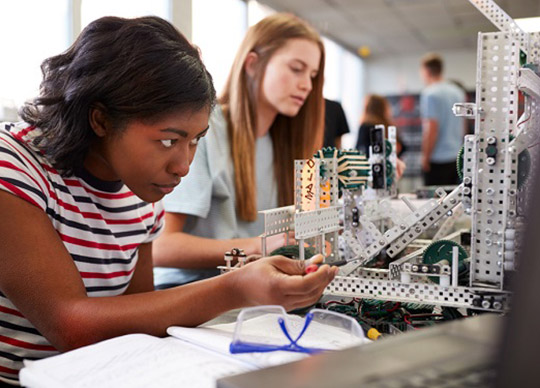
The Australian Government’s 2023 STEM Equity Monitor reveals the number of students enrolling in science, technology, engineering and mathematics (STEM) subjects in their final year of school has increased, and nearly reached gender parity.
The data are promising and highlight an opportunity to engage students much earlier in their schooling journey in STEM through programs like Future You, an educational program developed and led by the Australian Government’s Women in STEM Ambassador.
Professor Lisa Harvey-Smith, the Australian Government’s Women in STEM Ambassador welcomes the increase and what it means for Australia’s future.
“There is a tremendous opportunity for every child in Australia to contribute to tackling global challenges like climate change, and it is people with STEM skills who will create the technologies that take us there.
“We need to ready young people for the jobs of tomorrow, where it’s predicted that half of workers will need to know how to work with digital systems – a critical skill embedded in STEM studies,” says Professor Harvey-Smith.
From 2020 to 2021, year 12 STEM subject enrolments increased by almost 3000 students, with more than half of these being girls. Girls make up a large proportion of students enrolled in the biological and earth sciences but remain underrepresented in subjects such as IT, physics, and engineering.
“Australia imports more than 50% of our engineers from overseas because young people are not choosing engineering pathways. Research tells us that this is because they don’t understand what an engineer does, and they aren’t aware of all the different specialities within STEM.
Future You shines a light on STEM careers and includes ‘Day in the life’ resources to communicate a deep understanding of what a career in STEM could look like,” adds Professor Harvey-Smith.
Future You is working to increase participation in STEM subjects and careers by eliminating stereotypes about the type of people who work in STEM and increasing awareness about the various STEM careers amongst children aged 8 to 12, their parents, and educators.
“It’s not just girls who feel that STEM may not be for them. Damaging stereotypes, negative perceptions and other obstacles are holding many children back from following a career pathway in STEM, but programs like Future You can support greater understanding of relevant STEM pathways for all,” says Hilary
Schubert-Jones, program manager for Future You.
The STEM Equity Monitor collects and standardises data from a range of sources and puts them in a single report on the current state of STEM gender equity in Australia.
The 2023 report provides insights into whether efforts to progress equity in STEM are working, and where future efforts are best focused.






